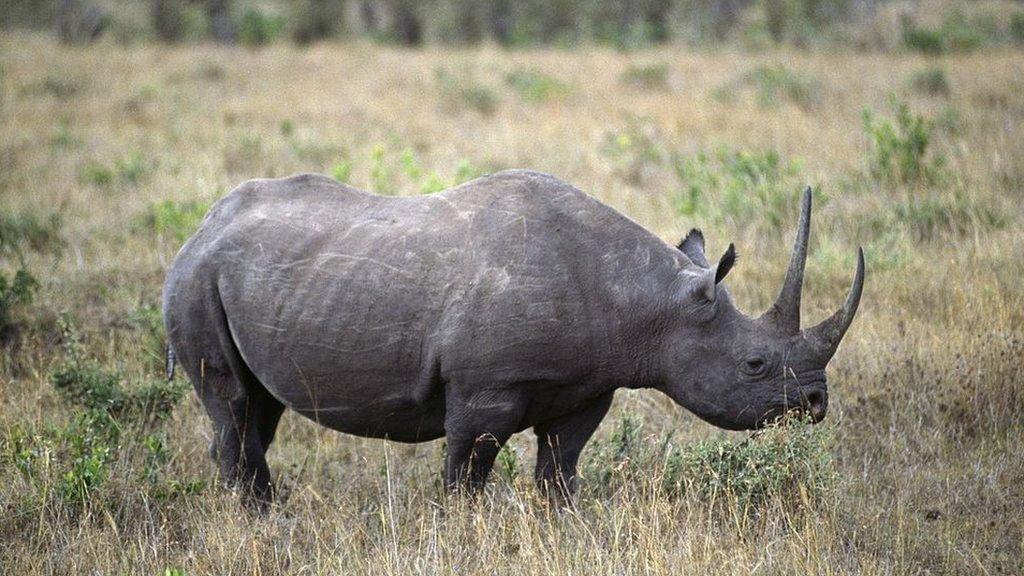Rhino poaching: Are rhinos evolving to grow smaller horns?
- Published
- comments

Poaching continues to be a severe threat to all rhino species across the world.
Their horns are still used in traditional medicines in China, despite having no proven medical benefit.
Because it is often the largest rhinos that are hunted for their bigger horns, based on photographs taken over the last 140 years, scientists now believe that Rhinoceros horns across all species have gradually shrunk.
Rhinoceros are an endangered species.
There are 5 species of rhino - White, Black, Indian, Javan and Sumatran.
There are fewer than 30,000 living in the wild today - just over 100 years ago, there were more than 500,000.
Rhinos are now passing on their smaller traits to future generations
Researchers at the University of Cambridge believe that as more smaller-horned rhinos are surviving into adulthood than larger ones, their smaller-horned traits are being passed on to future generations of rhino.
Whilst this might sound like this could have benefits to rhinos in the future, who may be seen as less of a target for poachers, rhino horns are really important to their survival.
So only having smaller horned rhinos may have a significant impact into the future.
Rhinos evolved their horns for a reason - different species use them in different ways such as helping to grasp food or to defend against predators - so we think that having smaller horns will be detrimental to their survival.
What did the researchers study?
Rhinos are "probably one of the hardest things to work on in natural history because of the security concerns," says lead author Oscar Wilson.
"So we were really excited that we could find evidence from photographs that rhino horns have become shorter over time."
They measured the horns of 80 rhinos, photographed between 1886 and 2018 with their horns in full view.
These photos included all five species of rhino - White, Black, Indian, Sumatran and Javan.
They also measured other parts of the rhinos body to work out the right proportions to the horn length, so ensure their analysis was accurate.
Watch Defending the Rhino: A Newsround Special
And while artwork is not precise evidence, the researchers also considered drawings of rhinos that have been dated back 500 years. Back then, this was the only way of keeping records of any animal species - photographs did not exist!
Sadly, the information and evidence they gathered shows that very little was done to protect or promote rhino conservation until the 1950s but is showing the direction that the species is heading in.
Mr Wilson said: "For at least a few decades now there's been much more of a focus on the conservation of rhinos - and this is reflected in the more recent images, which relate to their conservation in sanctuaries or their plight in the wild."
As rhino horn and elephant tusks are still worth money for poachers, these creatures continue to be targeted.
There are only two known individual northern white rhinos left in the world. Najin (L) and Fatu (R) and they are both female. This means that without a male in which to breed with, they are functionally extinct
Although a lot is being done to help protect these animals, evidence suggests their populations are still in decline.
Conservationists continue to do what they can to protect those that remain in the wild and help educate wider society about the threat these animals face and what can be done to better protect them.
- Published6 January 2021
- Published11 May 2016
- Published12 May 2016
